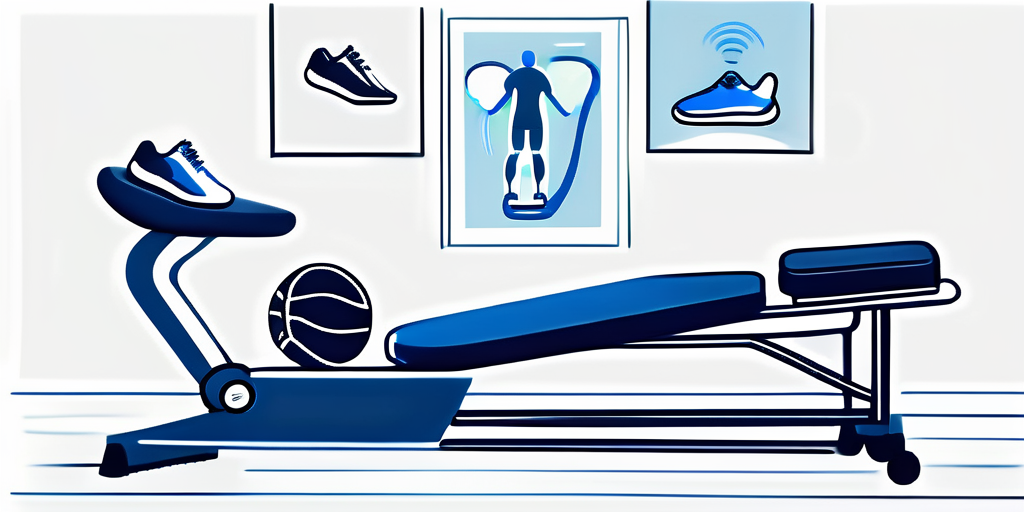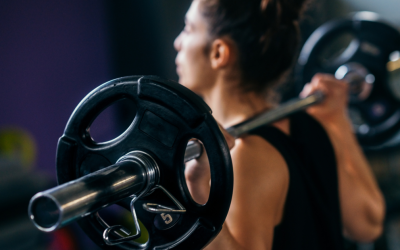The road to recovery from sports injuries can be long and challenging. One type of injury that athletes often face is a sports hernia. This painful condition can significantly impact an athlete’s performance and quality of life. But can chiropractic care help with sports hernias? In this article, we will explore the potential of chiropractic care in alleviating sports hernia pain and promoting healing.
Understanding Sports Hernias: Causes and Symptoms
Sports hernias, often referred to as athletic pubalgia, are not true hernias in the traditional sense. Unlike a typical hernia, which involves a protrusion of an organ or tissue through a weakness in the abdominal wall, sports hernias occur due to a strain or tear in the muscles, tendons, or ligaments in the lower abdomen or groin area.

Athletes who engage in sports that require sudden changes in direction, twisting movements, or repetitive kicking are at a higher risk of developing sports hernias. These sports include soccer, football, hockey, and tennis.
The most common symptoms of sports hernias include groin pain, lower abdominal pain, tenderness or swelling in the groin area, and pain that worsens with physical activity or specific movements, such as coughing or sneezing.
The Importance of Early Diagnosis
Early diagnosis is crucial for effectively managing sports hernias. A chiropractor with experience in sports injuries can conduct a thorough evaluation to determine the root cause of the symptoms and develop an appropriate treatment plan.
When left untreated, sports hernias can lead to chronic pain and functional limitations, affecting an athlete’s performance and overall quality of life. Therefore, seeking early diagnosis and treatment is essential to prevent long-term complications.
How Chiropractic Care Can Alleviate Sports Hernia Pain
Chiropractic care focuses on the musculoskeletal system, which includes the muscles, bones, and connective tissues. Chiropractors utilize techniques to restore proper alignment, reduce inflammation, and promote healing in the affected area.
One of the primary goals of chiropractic care for sports hernias is to reduce tension and imbalances in the muscles and ligaments surrounding the affected area. Chiropractors use spinal adjustments, soft tissue manipulation, and stretching exercises to restore balance and improve range of motion. These techniques can alleviate pain and help athletes regain their strength and flexibility.
In addition to manual adjustments, chiropractors may recommend complementary treatments such as ultrasound therapy, electrical stimulation, or cold laser therapy. These modalities can expedite healing, reduce inflammation, and promote tissue repair.
Furthermore, chiropractors often guide injury prevention strategies and rehabilitative exercises to help athletes recover from sports hernias and prevent future occurrences. By addressing the underlying causes and promoting overall musculoskeletal health, chiropractic care plays a vital role in the comprehensive management of sports hernias.
Key Chiropractic Techniques for Treating Sports Hernias
Chiropractors employ various techniques to address sports hernias and facilitate the recovery process. Some of the key chiropractic techniques used for treating sports hernias include:
Active Release Technique (ART)
ART is a soft tissue therapy that targets scar tissue and adhesions in the muscles and fascia. It involves applying precise pressure while the patient performs specific movements. ART can help break down scar tissue, improve muscle flexibility, and restore proper muscle function.
Graston Technique
The Graston Technique utilizes stainless steel instruments to detect and treat areas of soft tissue dysfunction. This technique can help reduce inflammation, increase blood flow, and promote tissue healing. It is particularly effective in breaking down scar tissue and adhesions in the affected area.
In addition to these techniques, chiropractors may incorporate spinal adjustments and mobilizations to address any underlying biomechanical issues contributing to the sports hernia. By ensuring proper alignment and movement of the spine, chiropractors can help alleviate stress on the affected area and promote overall healing.
Furthermore, rehabilitation exercises and stretches may be prescribed to strengthen the surrounding muscles and improve flexibility. These exercises are tailored to the individual patient’s needs and are crucial in preventing future injuries and enhancing performance.
Incorporating these techniques into a comprehensive treatment plan can maximize the benefits of chiropractic care for sports hernia patients. Proper diagnosis and individualized treatment strategies are essential for achieving optimal outcomes.
Benefits of Spinal and Pelvic Alignment in Recovery
In addition to directly targeting the affected area, chiropractic care emphasizes the importance of spinal and pelvic alignment in the recovery process. Proper alignment helps distribute forces evenly throughout the body, reducing stress on the injured tissues and promoting overall healing.

Chiropractors use specific spinal adjustments and manipulations to restore proper alignment and optimize the body’s biomechanics. By addressing any underlying misalignments or imbalances, chiropractors can enhance the effectiveness of other treatment modalities and support long-term recovery.
Furthermore, maintaining proper spinal and pelvic alignment can also have a positive impact on nerve function. When the spine is misaligned, it can pressure the surrounding nerves, leading to pain, numbness, or tingling sensations. By correcting these misalignments, chiropractors can help alleviate nerve compression and improve the body’s overall function.
Another crucial aspect of spinal and pelvic alignment is its role in improving posture. Misalignments in the spine and pelvis can lead to poor posture, affecting your look and contributing to muscle imbalances and joint strain. By restoring proper alignment, chiropractors can help you stand taller, straighter, and more confidently, reducing the risk of future injuries and enhancing your overall well-being.
The Role of Chiropractic Care in Preventing Sports Hernias
While chiropractic care is commonly associated with injury recovery, it also plays a crucial role in preventing sports hernias and other musculoskeletal injuries. By focusing on maintaining optimal spinal alignment, muscle balance, and flexibility, chiropractic care can help athletes minimize the risk of sports hernias.
Chiropractors work closely with athletes to develop personalized exercise routines, stretching protocols, and injury prevention strategies. They can also advise on proper body mechanics and biomechanics, which are essential for reducing muscle and ligament strain during physical activities.
Regular chiropractic check-ups and adjustments can identify and address minor imbalances or dysfunctions before they progress into more severe issues. By maintaining optimal spinal and pelvic alignment, athletes can enhance their performance, reduce the risk of injuries, and promote overall well-being.
Moreover, chiropractic care can help athletes improve their range of motion and joint flexibility, which is crucial for preventing sports hernias by ensuring that the joints move freely and without restrictions; chiropractors can help athletes move more efficiently and reduce the likelihood of overuse injuries.
In addition to spinal adjustments, chiropractors may use soft tissue therapy, massage, and corrective exercises to address muscle imbalances and improve overall musculoskeletal function. These holistic approaches help prevent sports hernias and enhance athletic performance and recovery.
Integrating Chiropractic Care with Other Treatments
In many cases, a comprehensive approach that combines chiropractic care with other treatments can yield the best results for sports hernias. Chiropractors often collaborate with sports medicine specialists, physical therapists, and orthopedic surgeons to develop cohesive treatment plans.
Physical therapy exercises and rehabilitation are frequently incorporated into the treatment plan to strengthen the muscles, improve flexibility, and enhance overall functional capacity. The synergy between chiropractic care and physical therapy can expedite recovery and prevent future injuries.
Orthopedic interventions, such as surgery, may be necessary in some cases. Chiropractors can provide pre-operative and post-operative care to optimize outcomes and support healing.
Furthermore, chiropractors may work closely with nutritionists to develop personalized dietary plans to aid healing. Proper nutrition is crucial in tissue repair; overall wellness is essential to a holistic treatment approach.
Additionally, chiropractors may incorporate modalities such as ultrasound therapy or electrical stimulation to complement traditional chiropractic adjustments. These modalities can help reduce pain, inflammation, and muscle spasms, enhancing the effectiveness of the overall treatment plan.
Frequently Asked Questions About Chiropractic Care for Sports Hernias
1. Can chiropractic care cure a sports hernia?
Chiropractic care cannot cure a sports hernia in the traditional sense, as surgery is sometimes necessary for complete resolution. However, chiropractic care can play a significant role in managing pain, facilitating the recovery process, and preventing future injuries.
2. How many chiropractic sessions are needed for sports hernias?
The number of chiropractic sessions required varies depending on the severity of the sports hernia and the individual’s response to treatment. For optimal results, several sessions over weeks or months are typically recommended.
3. Is chiropractic care suitable for all sports hernia patients?
Chiropractic care can be beneficial for most sports hernia patients. However, it is essential to undergo a thorough evaluation with a qualified chiropractor to determine the suitability of chiropractic treatment based on individual circumstances.
Some individuals with certain medical conditions or contraindications may not be suitable for chiropractic care. For example, individuals with severe osteoporosis or spinal fractures may require alternative treatment options. Additionally, pregnant women or individuals with blood clotting disorders may need to consult with their healthcare provider before pursuing chiropractic care.
It is crucial to discuss any pre-existing conditions, medications, or concerns with the chiropractor before starting treatment. This open and honest communication will ensure that the chiropractor can tailor the treatment plan to your needs, providing a safe and effective approach.
While chiropractic care cannot cure a sports hernia, it can significantly contribute to the recovery process and help prevent future injuries. Chiropractors can alleviate pain, promote healing, and enhance overall sports performance by addressing spinal and pelvic alignment, reducing muscle imbalances, and utilizing specific chiropractic techniques.
If you are suffering from a sports hernia, consider consulting a chiropractor with experience in sports injuries to explore the potential benefits of chiropractic care in your recovery journey. They can provide personalized guidance and treatment to support healing and restore your active lifestyle.



